Vietnam is filled with brightly colored and interestingly structured Vietnamese plants (especially if you are used to the more standard-looking American plants, trees, and flowers).
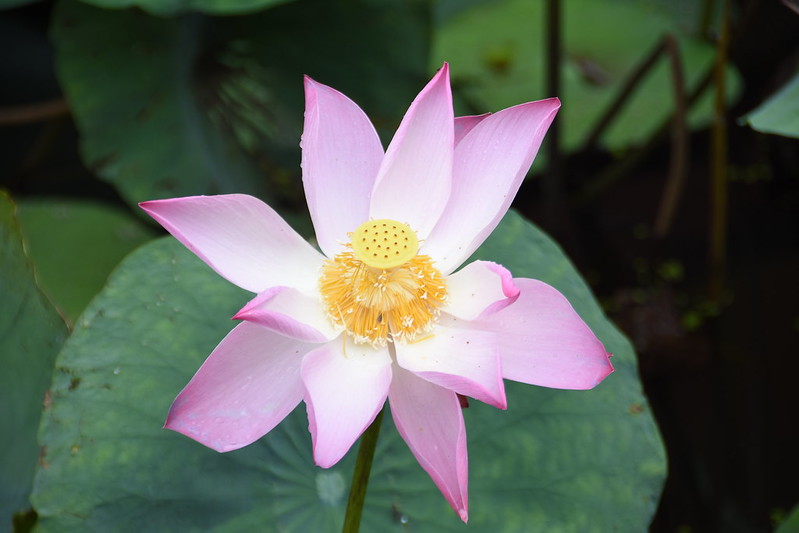
Learning about the plants in Vietnam can greatly enhance your experience there – knowing what the beautiful plants you see on your holidays are, as well as their uses.
Read on to find out everything you need to know about native Vietnamese flora, and where to see them.
1. The Flame Tree

This popular tree is an icon throughout Vietnam, especially in the southern and central provinces. And it is not a wonder why – the tree has a beautiful and striking appearance, due to the combination of its bright red flowers, against the clear blue Vietnamese sky.
The tree can be seen in its full striking color when it blooms in the south and south central coast, which starts in late spring, and lasts through to early summer (around April to June).
However, the flame tree can be found all over the country 9except maybe in the higher, more mountainous regions, like the northwest).
2. The Jackfruit Tree
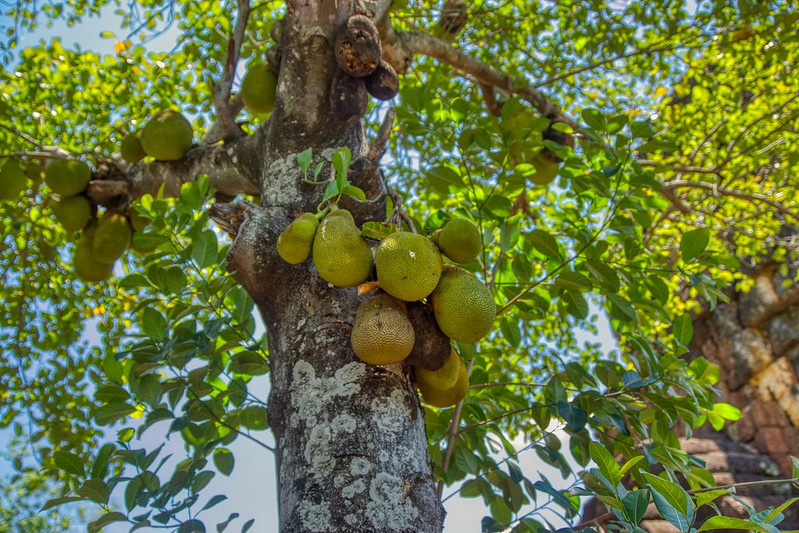
The fruit that this tree produces, jackfruit, is gaining popularity across the US and wider western world, as a wholefood vegan alternative to meat.
However, we westerners can’t really take credit for this – the Vietnamese people have been eating it fresh or cooked, for its refreshing taste and rubbery texture.
The tree itself is tall, and quite slender, with very dark green leaves, making it quite an elegant looking tree. But really, it is the fruit that stands out the most.
It is a huge, bulbous fruit that has a green, knobbly textured skin. It can usually be spotted growing near the trunk of the tree.
To give you an idea of the size of the fruit, they can commonly weigh in at around 50 kg, making them the largest tree-borne fruit, in the world. You can generally see these trees all over the southern and central Vietnamese coast, and in the Central Highlands.
They have a distinctive odor to jackfruits, especially if the fruits have been left to over ripen on the tree. It smells sweet and pungent, just between pleasant and absolutely revolting.
3. The Teak Tree
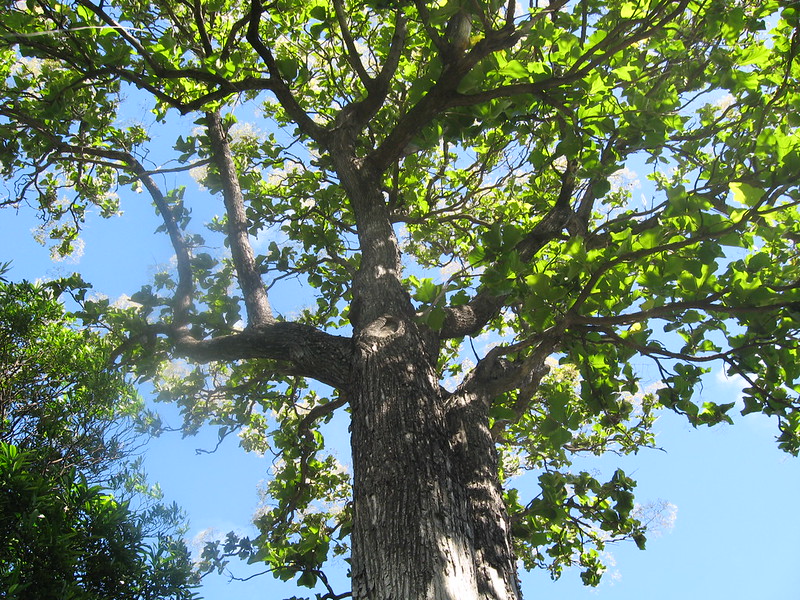
This is a totally quintessential exotic, tropical hardwood tree, and you probably have some in your house, especially if you are a fan of antique furniture.
They grow in small groups across the highlands of Vietnam. They are distinctive because of their arrow straight trunks, which grow pretty tall, and it’s huge, dinner plate sized leaves.
Because of teak’s popularity as a hardwood for furniture, much of Vietnam’s natural jungle supply has been chopped down, however new teak plantations can be found growing on the mountainsides.
4. The Rose Myrtle Bush
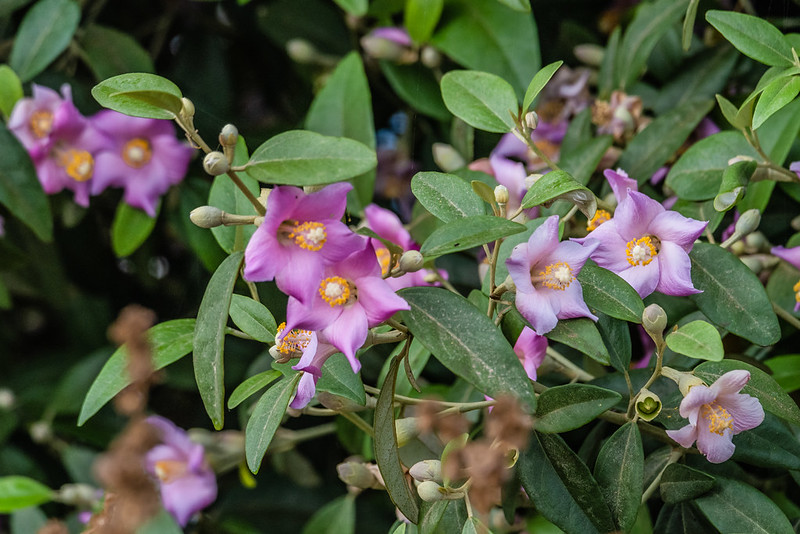
The rose myrtle bush is a dark green plant that is fairly common across Vietnam, though it can be found most frequently in the central Highlands.
They are most notable for their flowers and berries through – the flowers are violet in color, and have five petals, and the berries are dark hued.
The berries are used to make a potent alcoholic drink, called rose myrtle wine, which, unsurprisingly, has a flowery taste to it, which can be purchased on the Dalat and on Phu Quoc Island.
5. The Poinsetta Bush
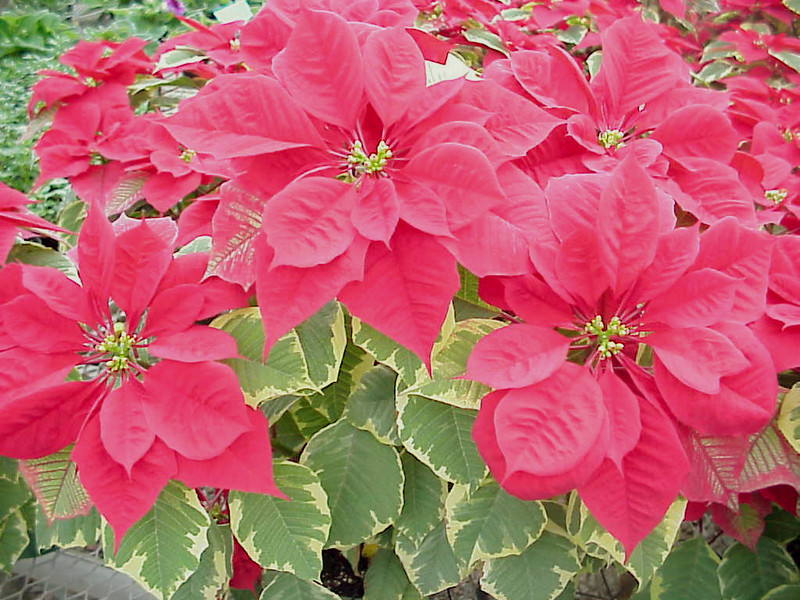
Also known as the Christmas Star throughout the US, this plant is pretty recognizable from its blood-red leaves, and can be found growing in the Central Highlands of Vietnam.
They prefer slightly cooler temperatures, meaning they can be found commonly in and around Dalat, which typically has temperatures that are around 10 degrees lower than the rest of Vietnam.
6. The Heliconia Plant
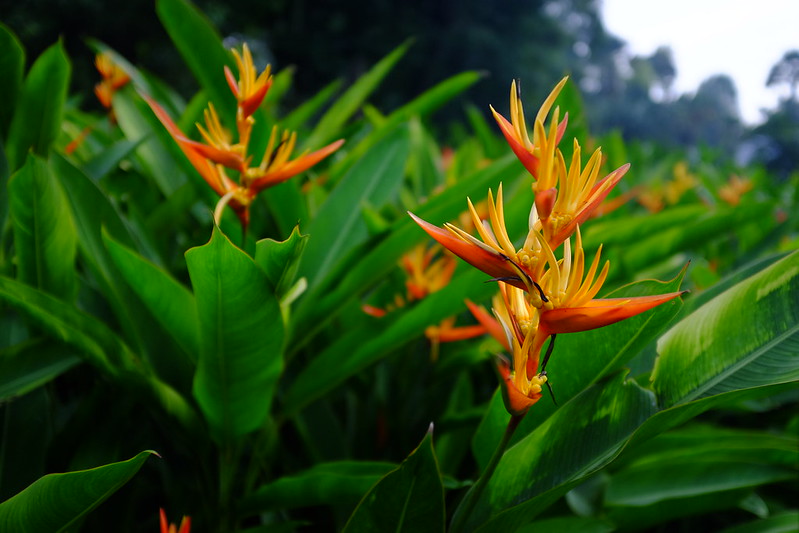
The Heliconia is a really distinctive, colorful, and highly decorative looking plant – often used in gardens as an ornamental plant.
Typically, it has broad, stiff green leaves, that are reminiscent of the banana tree’s leaves, and has tall, tough stems that burst open at the tip to reveal a set of highly colorful, beak shaped flowers.
There are two types of heliconia that are found most commonly in Vietnam – the false bird of paradise (known as which because it resembles the bird’s vivid plumage), and the lobster claw (called that because of its bright orangey-red flowers).
They are both beautiful, and can be very alien_aline looking, due to their funky shaped flowers and rich colors.
7. The Lotus Flower
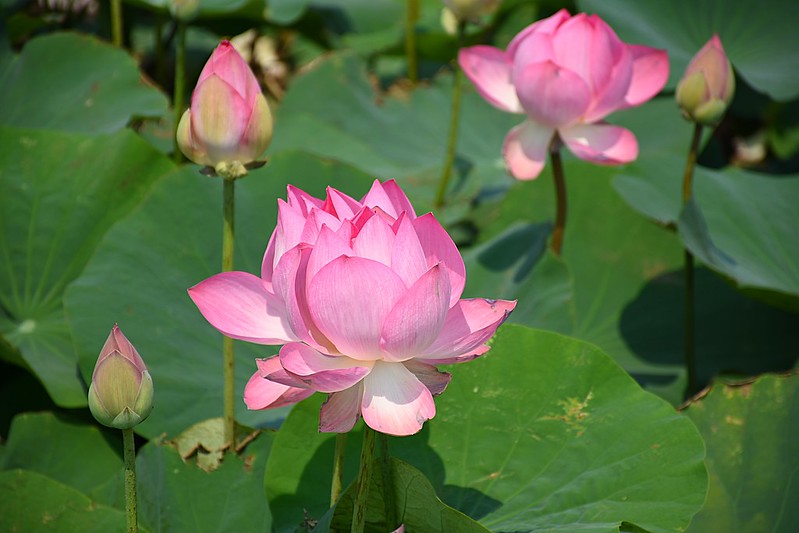
This is a must to include on this list – because it is the national flower of Vietnam, and usually springs to mind when you think of Southeast Asia. The lotus plant grows in freshwater ponds and lakes across the region, particularly in Vietnam.
It is actually considered sacred for both Buddhists and Hindus. Portrayals of the lotus flower are found in Buddhist temples, with deities and goddesses shown emerging from the lotus flower.
It is a beautiful flower, usually found in either pink or white varieties, which closes and opens with the coming of day and night.
The flower is on a stem, which grows all the way from the base of the lake or pond, and the plant also produces wide, green floating pads.
It is also a practical plant throughout Southeast Asia – with every part of the plant edible in some way. The seeds can be candied, or used in deserts, and are prized for their floral taste. Whilst the leaves are used to steam foods, such as rice and fish.
The stem can be used in soups and broths to add a distinctive fresh crunch. And the roots can be sliced, battered, and then fried for a crunchy street-food snack. Even the flowers can be used, to make a tasty lotus tea.
If you want to experience the beauty of waterways filled with lotuses whilst you are in Vietnam. You can visit the Mekong Delta river in the province of Dong Thap, in the homestays on the Lotus Fields.
8. The Yellow Oleander Plant
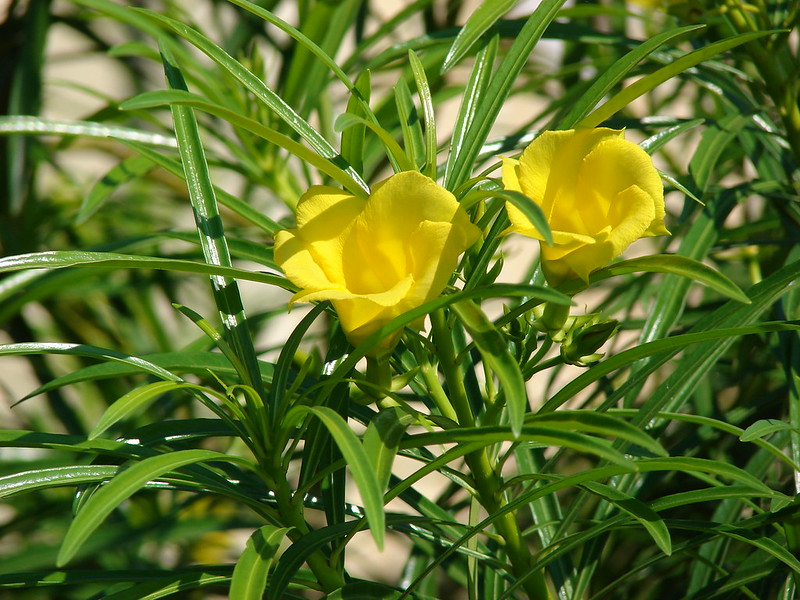
The yellow oleander is a small tree that grows in the coastal regions and the central highlands of Vietnam. Where it is planted as a decorative verge along highways, or grown as an ornamental plant in people’s gardens.
It can be recognized by its bright yellow, bell-shaped flowers, and its skinny leaves. It ranges from dark green to gray in color.
However, like all of the other varieties of oleander, it is incredibly toxic to humans and many kinds of animals. So don’t stand under it when it rains, or eat any part of it, as you will be in for a nasty surprise.
RELATED: 21 Beautiful Types Of Yellow Plants (Including Photos)
9. The Water Lily
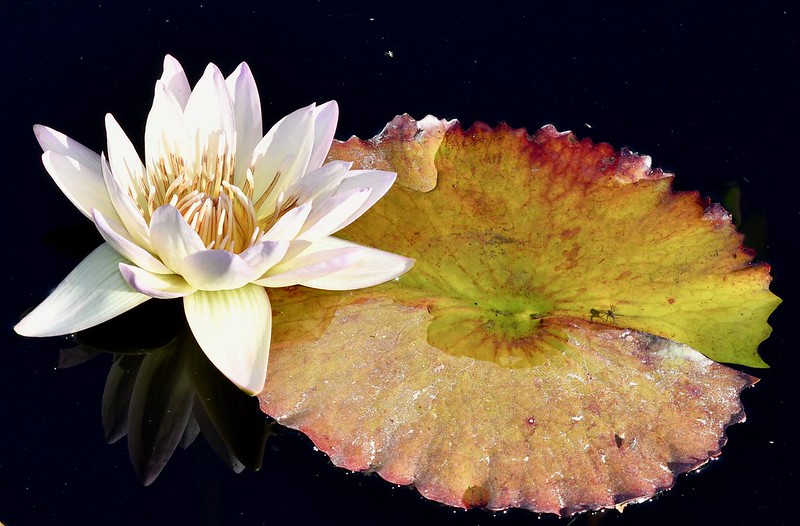
The water lily is a plant that has species found in ponds and lakes across the world. And is meaningful and beloved in many a nation. This is not different in Vietnam – which has a variety that is found commonly in freshwater that is near the coastline.
They have wide, circular floating lily pads, and a beautiful bright violet flower, with a sunshine yellow center.
These plants aren’t just beautiful either – they serve a more practical purpose for the Vietnamese people.
They are cooked in a Vietnamese delicacy, a complicated noodle soup that originates from the Mekong Delta, called bum mam. The stems and shoots of water lilies, it is different from other soup because of their purple glimmer.
They are used to garnish this soup. As their internal honeycomb shape is great for absorbing all of the flavorful broth.
10. The Flame Vine
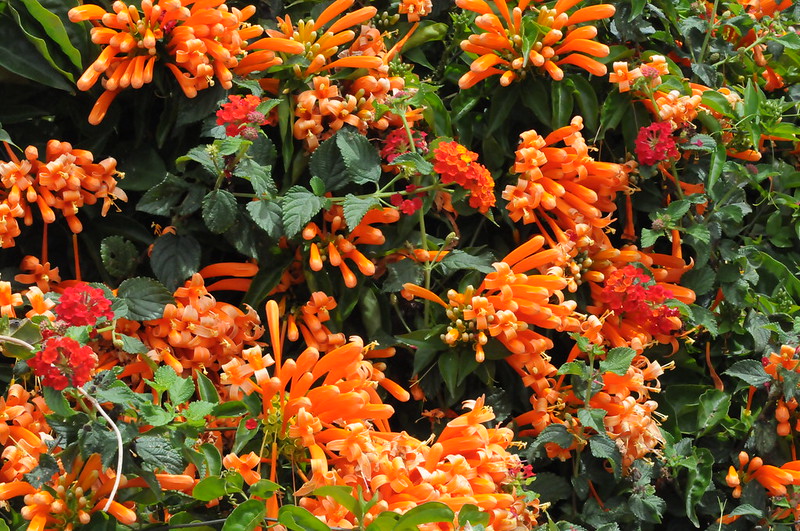
Also known as the flaming trumpet. This tumbling vine is a bright creeping plant that can be found in the Central Highlands. It is most recognizable for its eye-catching colors, with dense clusters of vibrant orange flowers bursting from the vine.
It is a flowering woody vine, which can set the landscape ablaze in Vietnam’s Central Highlands. Even on the grayest of days.
The plant produces flowers from fall to spring. Might even produce a small crop of their trumpet-shaped flowers during the summer months.
Though it is beautiful as one stand-alone vine, it is most naturally striking when it grows together in large numbers. And also in huge matted tangles.
This can be achieved when the plant is left unattended, as it spreads like wildfire. It can cover small structures like fences, walls, or garden sheds.
11. The Madagascar Periwinkle
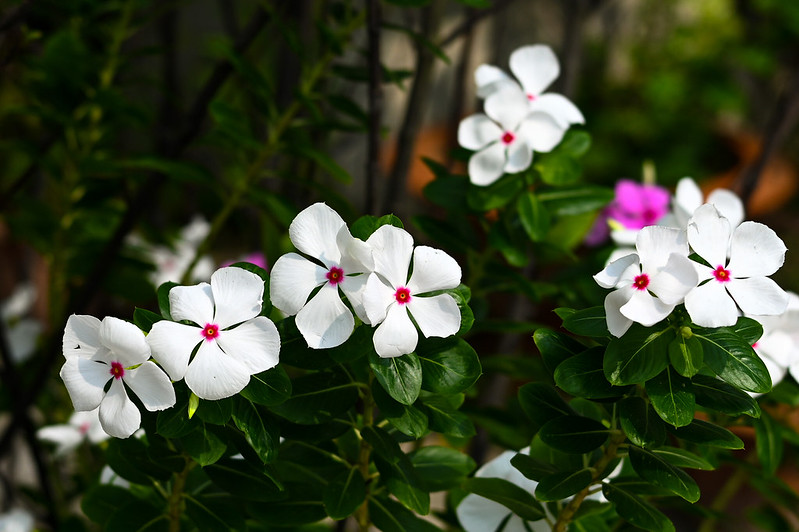
Despite its name, the Madagascar periwinkle is native to Vietnam and seems to grow weed-like across the nation’s coastline.
It can be spotted frequently along the cusp of sandy beaches. Liking to grow in nooks and crannies between rocks on the cliff faces.
It is a low-growing plant. And can be recognized by its pink, purple, or white flower (which sometimes has a different colored center.
Unlike a lot of other vegetation, the Madagascar periwinkle seems to thrive in hot, salty and windy conditions. Meaning it is a lot tougher than its dainty name would suggest.
In addition to their natural and ornamental purposes, the Madagascar periwinkle does also have medicinal value. As it is used to make vinblastine and vincristine.
These are chemotherapy drugs, which are used to treat a few different types of cancer. This has to be done by experienced pharmacists in the laboratory, using a complicated process of biosynthesization.
It also has a purpose in traditional Chinese medicine, being used to treat a myriad of diseases. Such as diabetes, malaria, and even Hodgkin’s lymphoma.
Final Thoughts
Vietnam plays host to a myriad of incredible, beautiful tropical plants, from trees, to shrubs, vines, aquatic plants and low growing flowers.
Many of these plants are wound into the culture of the nations – serving symbolic, religious, culinary, or medicinal values to the Vietnamese people.
Overall, Vietnam has a truly diverse range of plants, and is well worth a visit if you’re a flora fanatic, and have been enthused by Vietnam’s natural history and beauty.
Editor’s Recommendations
14 Beautiful Vietnamese Flowers (With Pictures)
20+ Amazing Types Of Lilies (Lilium) For The Long Blooming Season







